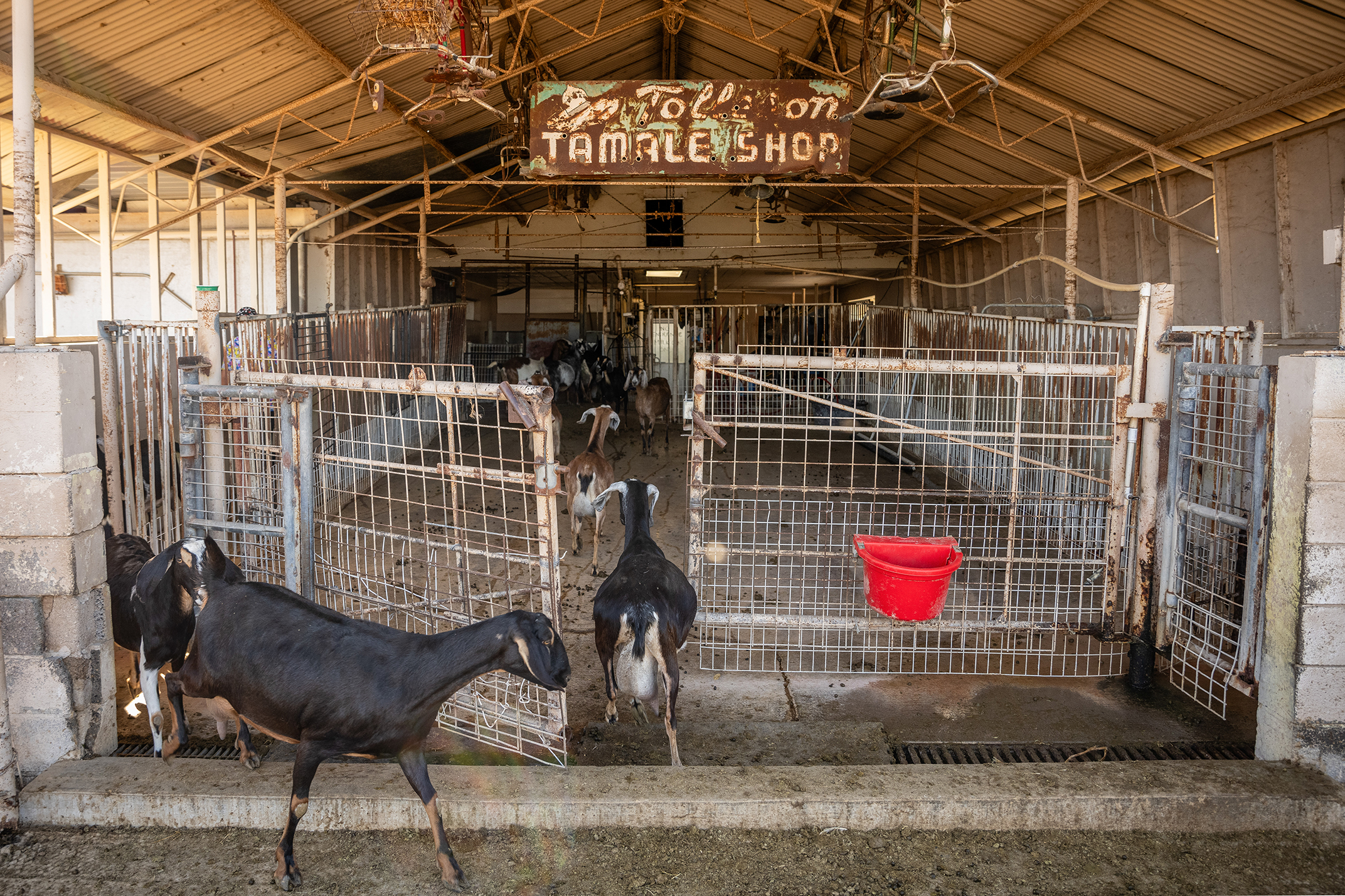Smaller Critters, Bigger Success
Bordered by the Gila River to the north, Crow’s Dairy goat farm is tucked into the back corner of a rural Buckeye neighborhood full of sprawling lots dotted with houses and hobby farms. But this goat farm is no hobby; Wendell Crow and his team milk around 180 goats each day. Their desert-adapted Nubians produce high-protein, high-fat milk—averaging one gallon per day per goat. And the work doesn’t stop with the milking as the dairy can produce up to 400 pounds of cheese daily.
Wendell and his wife, Rhonda, started their dairy careers with cows. But in the early 2000s, they were going broke milking a herd of 500.
“I loved milking cows, it just wasn’t something I could stay in business doing,” Wendell says. Both Wendell’s and Rhonda’s families had been dairy farmers in the West Valley since the early 1900s. But to stay in business as cow dairy, Wendell says, you must milk thousands of cows. They switched to goats after a visit to a goat dairy while vacationing convinced Wendell that goat cheese could taste good, if done right.
For the Crows, part of doing it right means letting the moms raise and nurse their kids. Goats birth one to three babies at a time, in late winter. On the Crows’ farm, they stay with their moms for five months, drinking mom’s milk all through summer while the goats are producing a significant amount.
Kids who feed from their mothers grow faster and tend to be bigger than bottle-fed babies. Bottle feeding also costs the dairy more in time and labor, so keeping babies with their moms is an economic as well as a wellness decision
It’s a balance, the economics. For Wendell, the hardest part of running a farm is “getting rid of goats that love me,” he says. “But that’s why I’m still in business. At a commercial farm, you have to produce. We have a few animals that are pets, but everything must produce. That’s why my wife and I make a good combination. She has the compassion. She’s taught me to be more compassionate. I've been raised in the commercial livestock industry. She suggested letting the moms raise their kids, and it’s worked out well for us.”
Wendell is a kind, bear of a man, towering over his goats at six-feet-four. You’ll find him most days in what seems to be his trademark look: denim overalls and a plaid shirt. He wears this “uniform” when he’s working with goats on the farm, as well as the two or three days a week he spends in his truck, listening to hip-hop while driving all over the Valley to deliver his product to his restaurant clients.
“A lot of it is a relationship between me and the chefs,” Wendell said. “And I really do work my ass off at customer service. The only thing better than my cheese is my service.” For Wendell, word-of-mouth between chefs is the best marketing. Chefs move restaurants and take his cheese with them, gaining him new clients. The chefs can choose from different flavors of chèvre, a French-style cream cheese; two kinds of feta; quark, a buttermilk that’s drained like Greek yogurt; and Gotija, a goat-milk version of the Mexican cheese cotija, and a name that Wendell has trademarked.
Chef Justin Beckett of Beckett’s Table has been buying from Crow’s Dairy for years. “I just like doing business with people who really love their craft and care about our business,” Beckett says. “He is a real person that I can talk to and who cares about the goats and the cheese he makes.”
Crow’s Dairy cheeses can often be found on the menu at Beckett’s Table. “My favorite cheese of his is the feta and more specifically the peppered feta,” Beckett says. “His feta is perfectly salty but doesn’t have the chemically briny taste that sometimes you get from ‘off-the-shelf’ feta.”
“The dish that people might recognize on the Beckett’s Table menu would be the Wood Oven Roasted Peppercorn Feta,” Beckett says. “We change it seasonally while using all different ingredients, and of course grilled Noble Bread.”
Of course, I asked Wendell if he has a favorite goat, and indeed he does. “Linda. She’s just so much like a person. I trimmed her hooves one time, she got off the stand and looked at her feet on both sides, like, ‘what kind of job did you do?’”
“I think she’s 9 now, she’s really an old goat. This year we were afraid she wouldn’t get pregnant. It’s a commercial dairy; if you don’t produce milk you don’t stay around,” Wendell said. “Linda was the last goat to kid this year. She had two boys. We kept the two boys, because of their mom’s longevity.”
Goats can kid for five years, on average. Most females are kept for milk production and to be bred later. Male goats (bucks) have to be hand raised, so when Wendell is deciding which to keep for breeding, he looks at production, longevity and attitude. “They [the males] have to be nice and like you.”
“They’re so personable. So much better than cows.,” he says. “You’re in touch with your animals, you know them. All the goats have names.” And you believe it when you visit the dairy, and meet the adorable babies with their long, floppy ears, their coats a variety of white or black and brown, some of them speckled with spots like stars. It’s easy to see how one would be tempted to keep them as pets. But on a working farm, everyone—from Wendell to his six employees to his goats—has to work hard to stay a member of the team.






